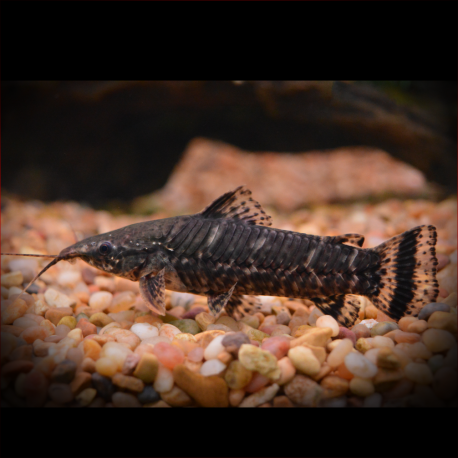More info
Datasheet
| Minimum Tank Size | 270 litres / 71.33 US gallons |
| Maximum Size | 12.0cm / 4.72inches |
| Temperature | 18°C / 64.40°F - 28°C / 82.40°F |
| Hardness | 15.02dgH / 268ppm - 20.00dgH / 357ppm |
| pH | 5.0-7.5 |
General Description
Megalechis Picta, commonly known as the Bar-Tailed Hoplo, was previously identified as M. thoracata. It can be differentiated by its dark vertical bar in the caudal fin, a longer dorsal fin spine, and an anal fin with five branched rays. This species, a member of the Callichthyidae family, is an omnivorous, hardy, and peaceful fish that reaches a maximum size of 12.0cm. It is widely distributed in river systems in Brazil, Venezuela, and Guyana.
Aquarium Setup
For a proper setup, a tank with a minimum size of 270 litres is recommended. A substrate of fine sand or clean gravel is suitable. Floating vegetation is appreciated, and other decor choices are flexible. The water should have a pH ranging from 5.0 to 7.5, a hardness of 268-357ppm, and a temperature between 18-28°C (see table).
Behaviour
The Bar-Tailed Hoplo is peaceful but may be too lively for smaller or delicate species. It thrives in a South American-themed aquarium alongside similar-sized characids, cichlids, and loricariid catfish. This adaptable fish shows territorial behavior during breeding and can tolerate hypoxic conditions.
Feeding and Diet
Megalechis Picta is an omnivore that accepts sinking dried foods, small live or frozen varieties like bloodworms and Tubifex. They can also consume floating foods once acclimated but should not be solely reliant on leftovers in the tank.
Reproduction & Dimorphism
The species is a bubblenester, where the male constructs a nest with floating plants. After spawning, the female is usually removed to prevent aggression from the male. The male guards the nest, and post-hatching, the fry become free-swimming in 3-4 days, feeding on Artemia nauplii.
Habitat and Distribution
This species is versatile and has been observed in various habitats. It's found in river systems across Brazil, Venezuela, and Guyana, excluding Suriname and French Guiana. Its adaptability extends to hypoxic conditions, making it a resilient species within its range.

